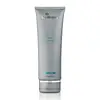What's inside
What's inside
 Key Ingredients
Key Ingredients

No key ingredients
 Benefits
Benefits

 Concerns
Concerns

 Ingredients Side-by-side
Ingredients Side-by-side

Water
Skin ConditioningCetyl Ethylhexanoate
EmollientSorbitan Stearate
EmulsifyingMethyl Gluceth-20
HumectantPolysorbate 60
EmulsifyingDimethicone
EmollientTocopherol
AntioxidantTocopheryl Acetate
AntioxidantTetrahexyldecyl Ascorbate
AntioxidantPanthenol
Skin ConditioningSodium Hyaluronate
HumectantCetearyl Alcohol
EmollientCeteareth-20
CleansingAminomethyl Propanol
BufferingCarbomer
Emulsion StabilisingDisodium EDTA
Phenoxyethanol
PreservativeEthylhexylglycerin
Skin ConditioningPotassium Sorbate
PreservativeWater, Cetyl Ethylhexanoate, Sorbitan Stearate, Methyl Gluceth-20, Polysorbate 60, Dimethicone, Tocopherol, Tocopheryl Acetate, Tetrahexyldecyl Ascorbate, Panthenol, Sodium Hyaluronate, Cetearyl Alcohol, Ceteareth-20, Aminomethyl Propanol, Carbomer, Disodium EDTA, Phenoxyethanol, Ethylhexylglycerin, Potassium Sorbate
Water
Skin ConditioningDisodium Laureth Sulfosuccinate
CleansingCocamidopropyl Hydroxysultaine
CleansingSodium Lauryl Sulfoacetate
CleansingPEG-150 Pentaerythrityl Tetrastearate
EmulsifyingCamellia Oleifera Leaf Extract
AstringentGlycerin
HumectantPanthenol
Skin ConditioningButylene Glycol
HumectantEthylhexylglycerin
Skin ConditioningPEG-6 Caprylic/Capric Glycerides
EmulsifyingDisodium EDTA
Phenoxyethanol
PreservativePotassium Sorbate
PreservativeParfum
MaskingCI 42090
Cosmetic ColorantCI 47005
Cosmetic ColorantWater, Disodium Laureth Sulfosuccinate, Cocamidopropyl Hydroxysultaine, Sodium Lauryl Sulfoacetate, PEG-150 Pentaerythrityl Tetrastearate, Camellia Oleifera Leaf Extract, Glycerin, Panthenol, Butylene Glycol, Ethylhexylglycerin, PEG-6 Caprylic/Capric Glycerides, Disodium EDTA, Phenoxyethanol, Potassium Sorbate, Parfum, CI 42090, CI 47005
Ingredients Explained
These ingredients are found in both products.
Ingredients higher up in an ingredient list are typically present in a larger amount.
Disodium EDTA plays a role in making products more stable by aiding other preservatives.
It is a chelating agent, meaning it neutralizes metal ions that may be found in a product.
Disodium EDTA is a salt of edetic acid and is found to be safe in cosmetic ingredients.
Learn more about Disodium EDTAEthylhexylglycerin (we can't pronounce this either) is commonly used as a preservative and skin softener. It is derived from glyceryl.
You might see Ethylhexylglycerin often paired with other preservatives such as phenoxyethanol. Ethylhexylglycerin has been found to increase the effectiveness of these other preservatives.
Panthenol is a common ingredient that helps hydrate and soothe the skin. It is found naturally in our skin and hair.
There are two forms of panthenol: D and L.
D-panthenol is also known as dexpanthenol. Most cosmetics use dexpanthenol or a mixture of D and L-panthenol.
Panthenol is famous due to its ability to go deeper into the skin's layers. Using this ingredient has numerous pros (and no cons):
Like hyaluronic acid, panthenol is a humectant. Humectants are able to bind and hold large amounts of water to keep skin hydrated.
This ingredient works well for wound healing. It works by increasing tissue in the wound and helps close open wounds.
Once oxidized, panthenol converts to pantothenic acid. Panthothenic acid is found in all living cells.
This ingredient is also referred to as pro-vitamin B5.
Learn more about PanthenolPhenoxyethanol is a preservative that has germicide, antimicrobial, and aromatic properties. Studies show that phenoxyethanol can prevent microbial growth. By itself, it has a scent that is similar to that of a rose.
It's often used in formulations along with Caprylyl Glycol to preserve the shelf life of products.
Potassium Sorbate is a preservative used to prevent yeast and mold in products. It is commonly found in both cosmetic and food products.
This ingredient comes from potassium salt derived from sorbic acid. Sorbic acid is a natural antibiotic and effective against fungus.
Both potassium sorbate and sorbic acid can be found in baked goods, cheeses, dried meats, dried fruit, ice cream, pickles, wine, yogurt, and more.
You'll often find this ingredient used with other preservatives.
Learn more about Potassium SorbateWater. It's the most common cosmetic ingredient of all. You'll usually see it at the top of ingredient lists, meaning that it makes up the largest part of the product.
So why is it so popular? Water most often acts as a solvent - this means that it helps dissolve other ingredients into the formulation.
You'll also recognize water as that liquid we all need to stay alive. If you see this, drink a glass of water. Stay hydrated!
Learn more about Water